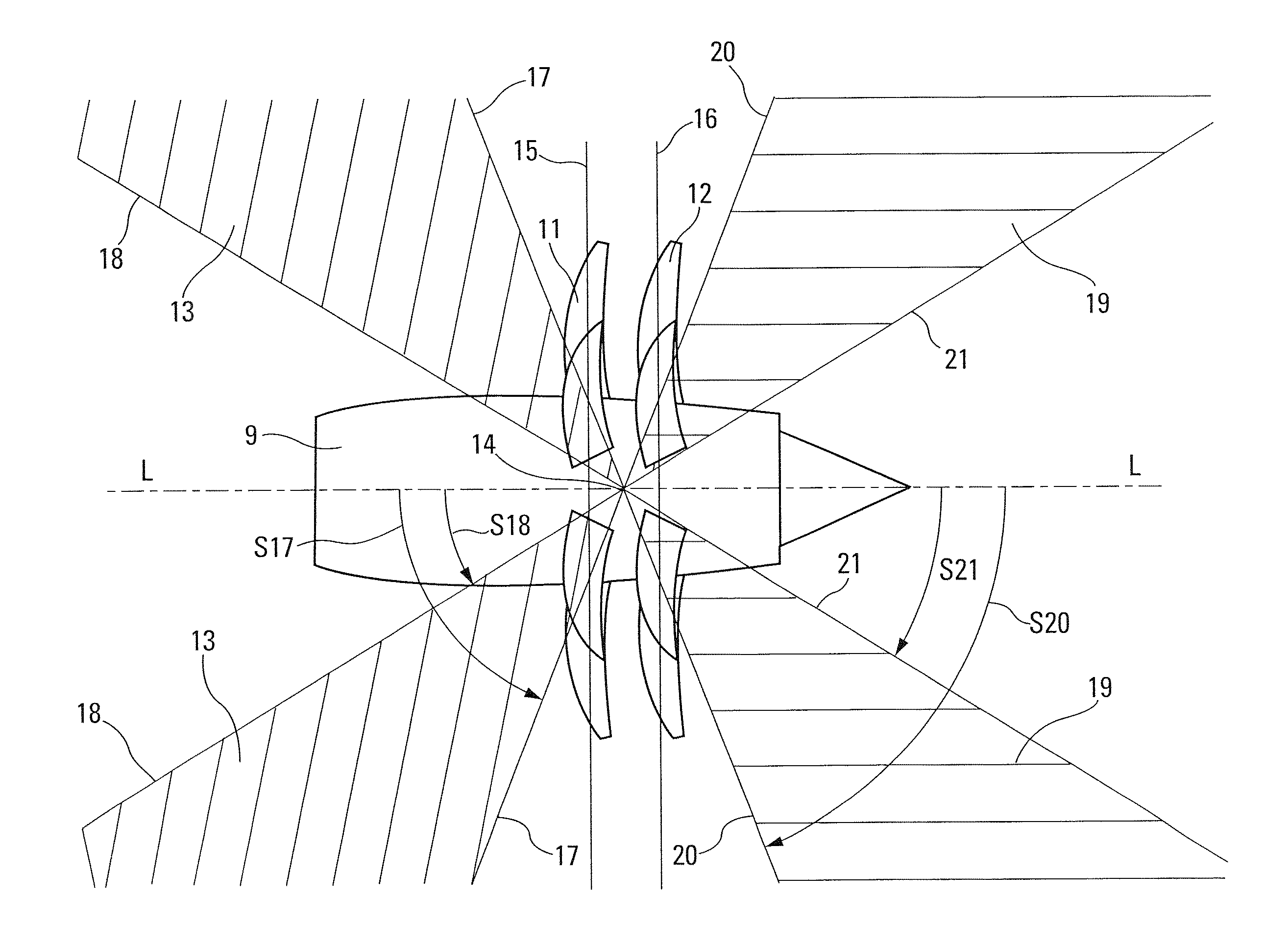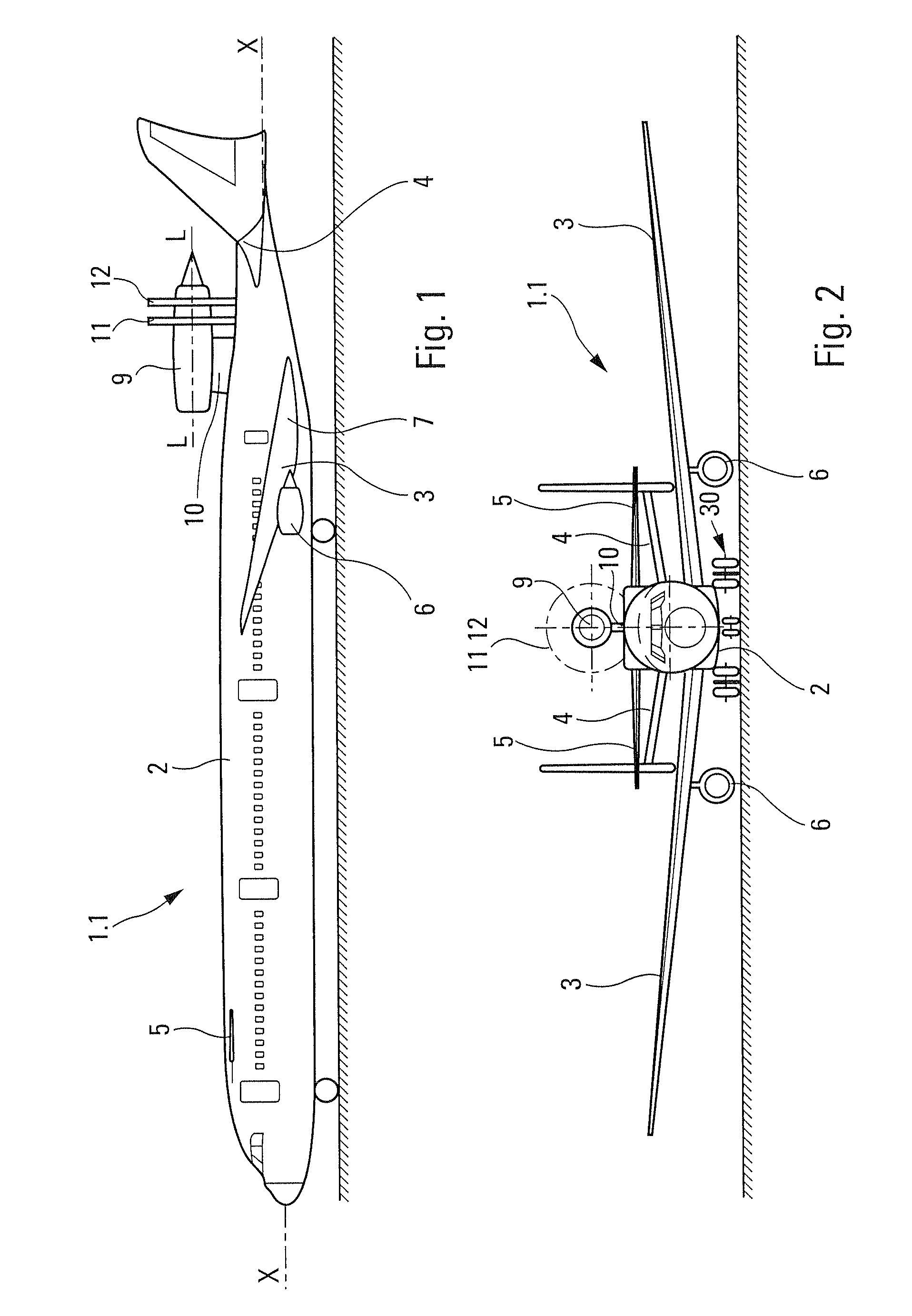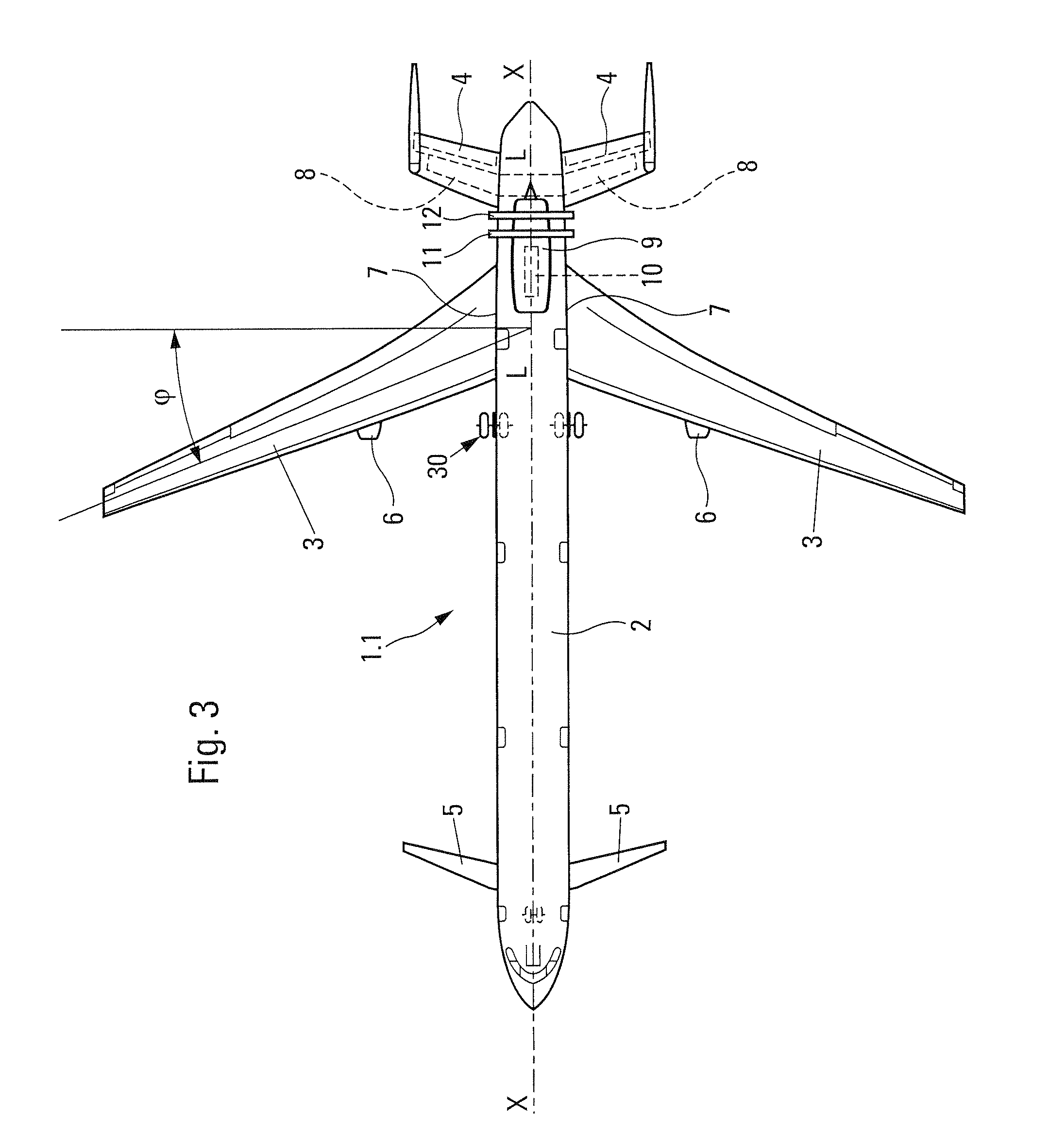Method for producing an aircraft with reduced environmental impact and the aircraft thus obtained
- Summary
- Abstract
- Description
- Claims
- Application Information
AI Technical Summary
Benefits of technology
Problems solved by technology
Method used
Image
Examples
Embodiment Construction
[0039]The commercial aircraft 1.1, according to the invention and shown schematically in FIGS. 1 to 3, has a longitudinal axis X-X and comprises a fuselage 2, provided with two symmetrical wings 3, a rear horizontal stabilizer 4 and a front airfoil 5 of the canard type.
[0040]The wings 3, which each support a turboshaft engine 6, have a reverse sweep Φ, for example of the order of around twenty degrees, and their wing root sections 7 are moved backward toward said horizontal stabilizer 4.
[0041]The horizontal stabilizer 4 is of the known THS type with variable inclination and is supported by a stabilizer strut 8.
[0042]On the back of the rear portion of its fuselage, the aircraft 1.1 supports a turboprop 9, supported by a vertically protruding pylon 10 fixedly attached to the structure of said aircraft. The turboprop 9 has an axis L-L parallel with the longitudinal axis X-X (the axes L-L and X-X define the vertical horizontal mid-plane of the aircraft 1.1) and comprises two unshrouded ...
PUM
 Login to View More
Login to View More Abstract
Description
Claims
Application Information
 Login to View More
Login to View More - R&D
- Intellectual Property
- Life Sciences
- Materials
- Tech Scout
- Unparalleled Data Quality
- Higher Quality Content
- 60% Fewer Hallucinations
Browse by: Latest US Patents, China's latest patents, Technical Efficacy Thesaurus, Application Domain, Technology Topic, Popular Technical Reports.
© 2025 PatSnap. All rights reserved.Legal|Privacy policy|Modern Slavery Act Transparency Statement|Sitemap|About US| Contact US: help@patsnap.com



